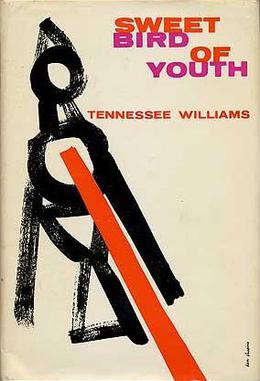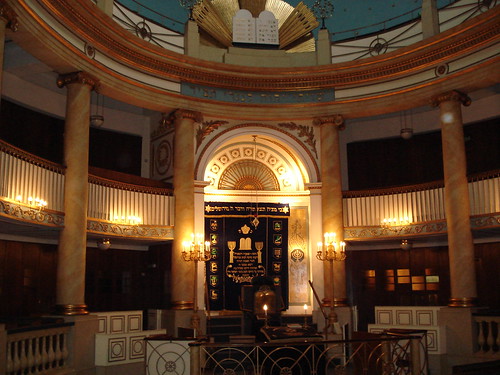I first went there in 1982 when as a student I came to London for a week as part of my course. Four of us made our way to Ronnie Scotts, scraped together the entry fee and ordered one bottle of the cheapest white wine between us - Laski Riesling. We made it last for a couple of hours whilst listening to the Buddy de Franco quartet. The waitress asked us several times if we needed more drinks and wasn't impressed with our request for a jug of water. We scraped up enough to order a burger and chips between us before the night ended. These days I am a regular. The music is always great. The drinks are still expensive, but where else over a few months could you here the likes of Lonnie Liston Smith,
Avishai Cohen, Dee Dee Bridgewater,
Mario Biondi and countless other leading jazz musicians perform? Its the best night out in London!
A little further west in Great Marlborough Street you can find my favourite London department store -
Liberty. Now that's saying something. Remember this city is home to Selfridges (which I also love), Harrods (which for me is overrated) and Harvey Nichols so we are not short of fancy stores.
The store was founded by Arthur Lasenby Liberty and opened in 1875 selling ornaments, fabric and objects d'art from the Far East. Liberty had been working for another retailer for ten years and borrowed the then enormous sum of two thousand pounds from his future father-in-law to set up by himself. Much loved by Londoners and tourists alike and still famous for its
Liberty print, the store has excellent ranges of both designer and mainstream fashion for men and women, a wonderful art shop, soft furnishings - including the
Svenskt Tenn range from Sweden with some of
Josef Frank's original designs, stationery, chocolates, jewellery and lots more. There is an annual sale of original arts and crafts furniture which is one of my highlights of the year - despite never having been able to afford any of the items - although I do have a very nice reproduction Svenskt Tenn tray in my lounge! Even if you don't want to buy anything, its a great place to spend an hour or so just browsing.
I am not one for pampering - no fancy massage or spa treatments for me, but I wouldn't miss my weekly visit to the
Ted's Grooming Room for anything. This Turkish barbers shop owned by fashion design mogul Ted Baker. Following a visit to Istanbul some years ago and a haircut and shave in a traditional Turkish barber shop he established one of his own on Theobalds Road in London's
Holborn district. I pondered for some time before my first visit - attracted by the smells of balsam and lemon coming from the open door as I passed on the way to my gym which is just across the road. Finally plucking up the courage to go in a couple of years ago, I am now addicted. Once a week for a little over twenty quid I have my (not very much) hair cut off - a neat "zero" and my neck shaved.
But that's not all, you also get the flame treatment, where the barber lights what resembles a cotton wool bud dipped in alcohol and sweeps it across the ears singeing off little "unwanted" hairs. Remember not to move while he does this. It might be best to close your eyes if you are of a nervous disposition. A woman I once worked with told me that she had been to a hamam in Beirut and when relaxing after her massage, jumped off the slab when she saw the masseuse coming towards her with a similar flame. Terrified and not knowing that she was going to sweep it across her upper lip as many Lebanese ladies do, my friend's screams were greeted with hysterical laughter from the local women. After the fiery bit, things calm down with a bit of a head massage when they rinse your hair (in my case, head), then rub lemon into your scalp before covering it in a hot towel and giving a rigorous arm, neck and shoulders massage. This is one of my highlights of my week.

London has some of the world's best museums and galleries. Just think of the Victoria and Albert Museum, the British Museum, National Gallery, Tate Modern, Tate Britain, National Portrait Gallery and all of those specialist museums we have in our city. Regular readers will know I have a weakness for the
Ben Uri Gallery in north London. Founded in 1915 and originally located in the East End, the Ben Uri is today housed in a small shop unit in St. John's Wood. The premises are inadequate and the location not central but the collection and the exhibitions programme are world class and easily put the gallery into my top ten of London's best bits! The permanent collection concentrates on Jewish art and has many highlights including works from the likes of David Bomberg,
Simeon Solomon,
Jankel Adler, Mane-Katz, Jacob Epstein and many more. In the last few years the gallery has also acquired works by Chagall, Soutine and Grosz. I have written about a number of the temporary exhibitions
here. The gallery is looking for a new, larger and more central home so that more of its unique collection can be displayed. In the meantime you can still visit the current
Boris Aronson exhibition.
Whilst Foyle's is my favourite, I have to include at least one more book shop in my top ten. I am a pushover for travel books - guides, maps, travelogues, the lot. London has two excellent travel book specialists.
Daunts on Marylebone High Street has an amazing church-like interior with old wood panelling and literally thousands of books covering every part of the world. The breadth and depth of the stock is excellent with many books here that you would rarely see elsewhere. This includes histories and fiction from and about each country shelved together with the travel guides. Its another place to spend a very long time, drifting from one shelf to another and collecting lots of books to take home!
Stanfords on Long Acre in Covent Garden takes the same approach to display, has slightly less stock than Daunts but is especially good for maps. They also have a small cafe. Both stores also have other branches. Its very hard to choose between the two but for the wider stock and unique atmosphere, Daunts is tops for me and makes it into my top ten.
I haven't listed any buildings yet. There are so many to choose from. I love the Gherkin and the Shard but as regular readers will know, modernism and art deco are my special interests. Again, London has some great examples of these genres but I have limited myself to just one and that's the wonderful
Ibex House near Tower Bridge. Completed in 1937 and designed by Fuller, Hall and Foulsham who were also the architects for the lovely
Bonhams building just off Oxford Street, it is probably the largest surviving example of this style in the UK. Designed as an office block, it is still home to a number of companies and has a great Italian caff (yes caff, not cafe) on the ground floor, where behind the beautiful
curved windows they serve "full English breakfasts" and other delicacies. I love the curves, layers and colour of this beautiful building that brings a touch of class to this part of Aldgate.
Finally, a touch of style. For my favourite shopping experience in London...or maybe the world...I go to the
Yohji Yamamoto shop in Conduit Street just off Regent Street. Yamamoto designs ultra modern but totally timeless clothes for both men and women. His almost architectural garments are exquisite, usually black and always expensive. But worth every penny. The esteem in which Yamamoto is held is measured by the fact that his designs were the subject of an exhibition at the Victoria and Albert Museum a few years ago. Best of all, his clothes can be worn by people of all ages including those of us no longer able to wear tight t-shirts! As well as selling great clothes, the shop has great staff who are friendly, helpful and extremely knowledgeable about the collections.
So that's it, my ten best bits in London - and that's without any of the theatres, cinemas or major museums. I have stuck to places that are still open or standing. Some of my all time favourites are no longer with us - the Astoria on Charing Cross Road, Jones men's clothes shop in Floral Street and most painful of all Tower Records at Piccadilly Circus. Perhaps the subject of a future post...
You might also like these...
.









































